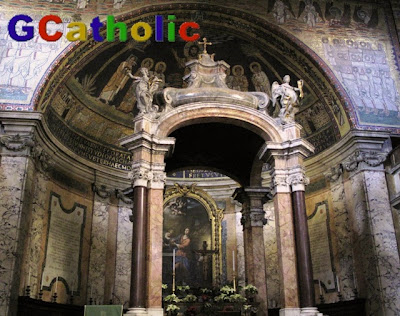When Pope Benedict announced on October 24 that he would create six cardinals on November 24, it came as a surprise to all, unlike consistories that took place in the last 20 years when they had always been predicted by Vaticanists. The primary reason why this is possible is the small size of the consistory. The preparatory work for the consistory, including its logistical, liturgical and tailoring aspects, has become much easier when only 6 cardinals are involved.
It has been no secret that Pope Benedict XVI favours more consistories for the creation of cardinals in shorter intervals and in small sizes. Part of the reason is to make the liturgy simpler and shorter. In the recent year, the rite of giving the cardinalatial rings and of canonizing saints have been moved outside of eucharistic liturgy, when in the past they took place after the Liturgy of the Word in a Mass. This is to make a distinction between sacraments and such ecclesial acts in the authentic spirit of liturgical renewal.
The six prelates to be inducted into the College of Cardinals are:
Archbishop James Michael Harvey (63), Titular Archbishop of Memphis, Prefect of the Papal Household (USA
)
Patriarch Béchara Pierre Raï (72), Maronite Patriarch of Antioch (Lebanon
)
Major Archbishop Baselios Cleemis Thottunkal (53), Syro-Malankar Major Archbishop of Trivandrum (India
)
Archbishop John Olorunfemi Onaiyekan (68), Metropolitan Archbishop of Abuja (Nigeria
)
Archbishop Jesús Rubén Salazar Gómez (70), Metropolitan Archbishop of Bogotá (Colombia
)
-
Archbishop Luis Antonio Gokim Tagle (55), Metropolitan Archbishop of Manila (Philippines
)
No Italians (actually no Europeans) are named this time, due to criticisms that the last consistory created 7 Italian cardinals. In the February consistory, 6 of the new Italian cardinals were heads of various Roman dicasteries and so it should not have been a surprise. Rather, the liberals took an opportune attack on the Italian Cardinal Bertone, whom the pope entrusted with the most "powerful" office of Secretariat of State, who not only deals with states of the world but also coordinates and mediates the work within the Roman Curia. While the Patriarch of Venice, the Archbishop of Turin, and 3 other heads of different curial departments (Paglia, Celli and Fisichella) are expected to receive a red hat among the Italians, they will have to wait.
By November 23, when Cardinal Martino reaches the age of 80, there will remain 114 cardinals under the age of 80. On the next day, the 6 new additions will happily fill up the College of Cardinals with 120 electors, the maximum stipulated by the apostolic constitution Romano Pontifici eligendo in 1975. The total number of cardinals will reach 211.
Here are some interesting facts about this Red Saturday consistory:
- (Correction) The only other consistory to create only non-European cardinals was held in 1924.
- The last consistory with no Italian cardinals was held in 1927.
- The last time there were multiple consistories within the same year was 1929.
- The last consistory with 6 or fewer cardinals created was Paul VI's consistory in 1977 of 4 cardinals.
- The last consistory with no "honorary cardinals" (prelates who had reached the age of 80 when created cardinal) was in 1998.
- Since 1991, before most consistories for the creation of cardinals, the pope has also taken the opportunity to invite all cardinals to discuss certain topics in the context of an extraordinary consistory. Because of an extraordinary and ordinary consistory that were held earlier this year, the pope decides not to hold an extraordinary consistory this time. The last time such has not happened was in 2003 when Pope John Paul II's health was failing.
- Like the last consistory in February, the order of cardinals created in this consistory follows the liturgical precedence (except the first cardinal). A curial prelate, Archbishop Harvey, will be the first one to be created and will address the pope on behalf of the new cardinals (and would become the Cardinal Protodeacon in February 2022), followed by a Patriarch, a Major Archbishop, and 3 Archbishops in order of the dates of their episcopal ordination.
- When Major Archbishop Thottunkal becomes a cardinal, the Syro-Malankar Church (recently raised to major-archepiscopal rank in 2005) will be the last patriarchal Church that has a member in the College of Cardinals to share the governance of the catholic Church.
 |
| Consistory of 2006 |































